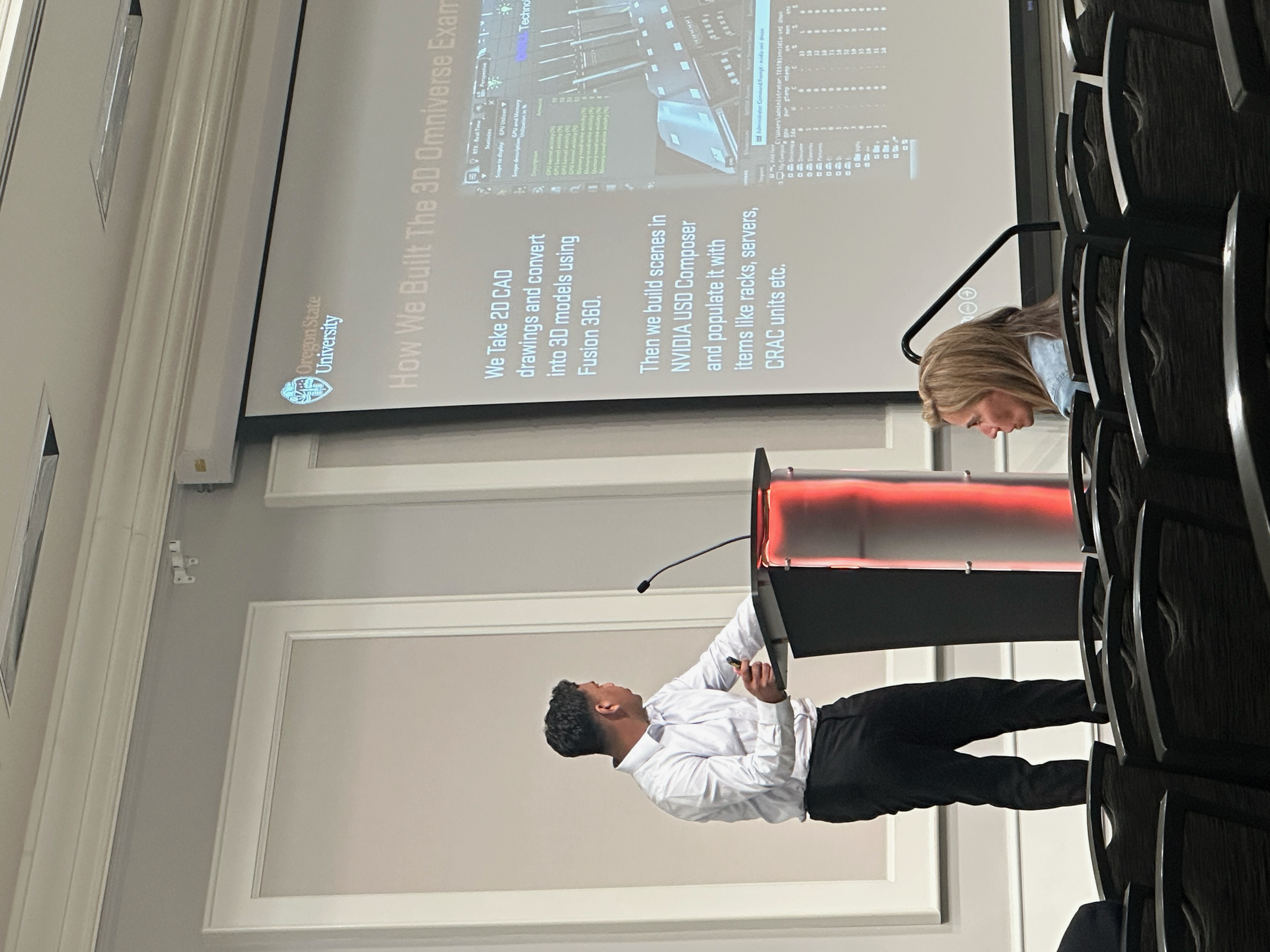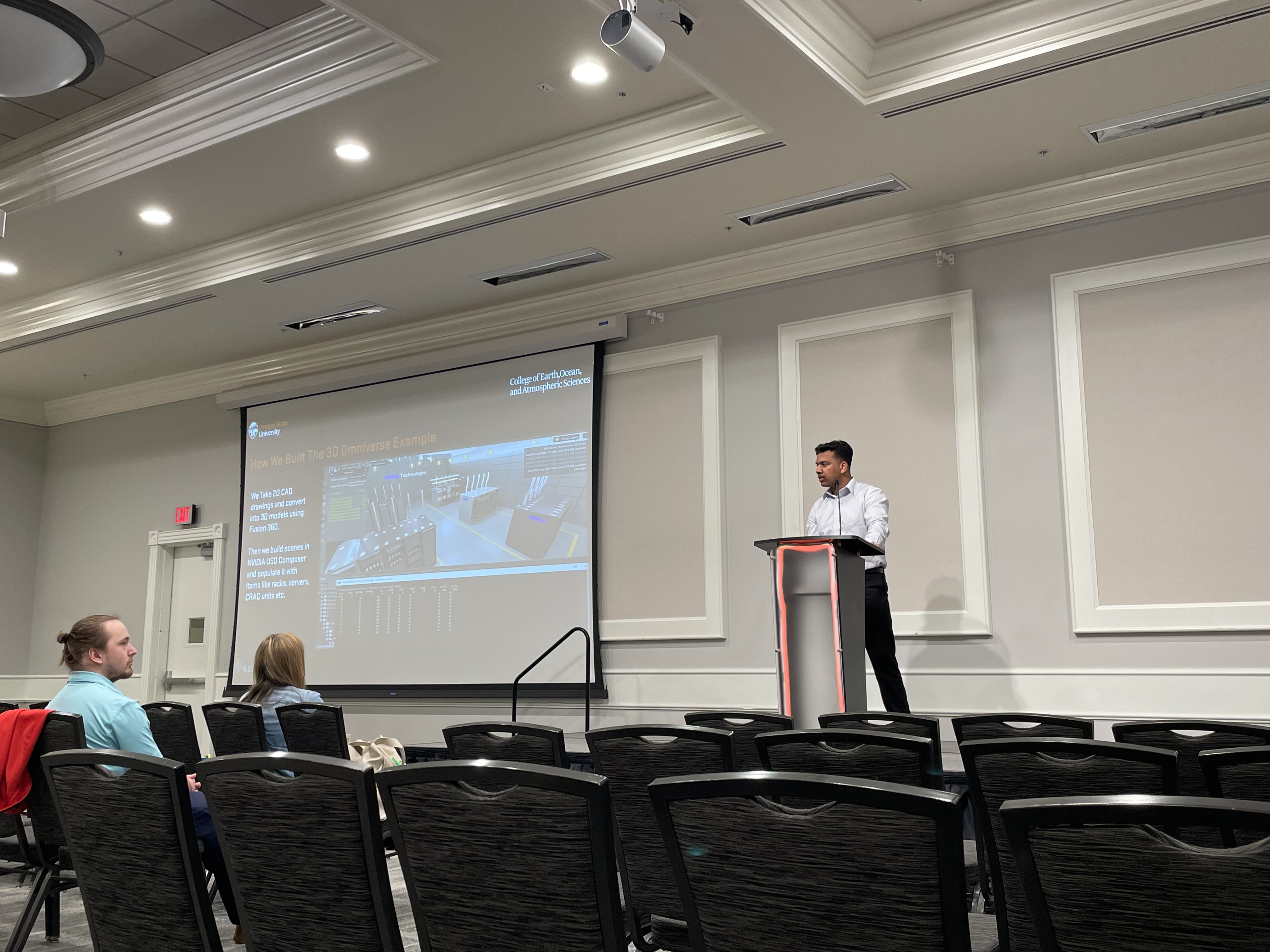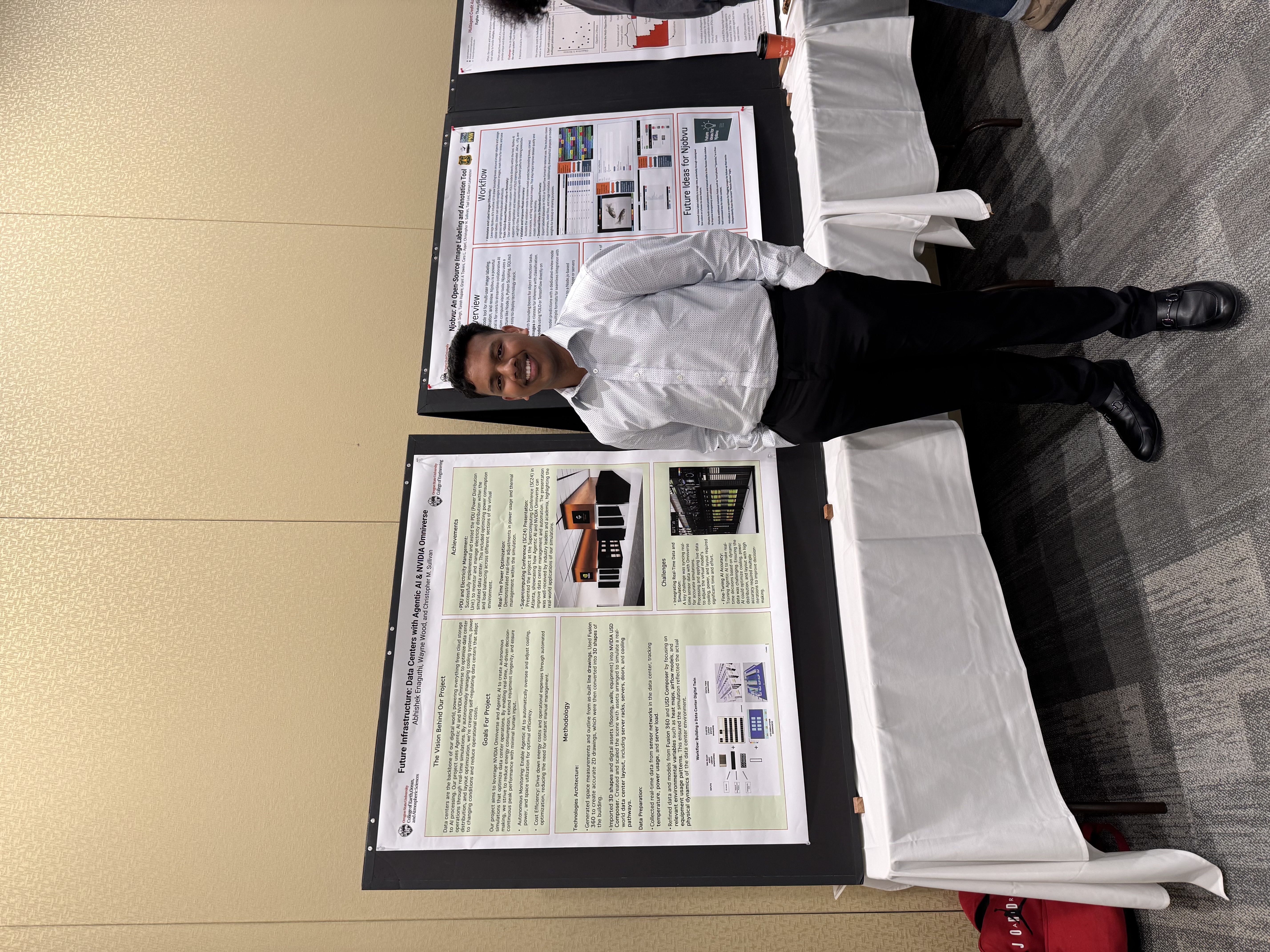AI Week at Oregon State University: Digital Twins, The CIC, and Our Omniverse Demo
April 30, 2025
Last week during Oregon State University's AI Week, I got to share our work at the new Jen-Hsun Huang & Lori Mills Huang Collaborative Innovation Complex (yeah, it's a mouthful—everyone just calls it the CIC). If you haven't heard, this building is Oregon State University's latest flex: it's packed with next-gen research labs, supercomputing power, and basically sets the standard for how tech buildings should be built.
Our project? We're building a digital twin of the CIC's main server room using NVIDIA Omniverse. That means we're making a full virtual replica—down to the racks, sensors, and sliding doors—that can simulate everything from airflow to security to how people interact with the space.
It's not just for show. With this setup, we can test layouts, run AI-powered cooling simulations, and find ways to make the whole place more efficient (and way less chaotic) before anyone touches real hardware.
At AI Week, I gave a quick lightning talk about how we made all this happen—and showed off our Omniverse poster. The crowd favorite? The smart sliding door. I scripted it to open on its own if you walk up, and for some reason, everyone thought that was the coolest thing ever.
This project is about making campus tech smarter and more future-proof, and honestly, it's just getting started. Stay tuned.





Key Takeaways
- Digital twin technology is revolutionizing how we plan and optimize server room infrastructure
- NVIDIA Omniverse provides powerful tools for creating interactive, physics-accurate simulations
- The CIC represents a new standard in research facility design and capabilities
- Smart automation features, like the interactive sliding door, demonstrate the practical applications of digital twin technology